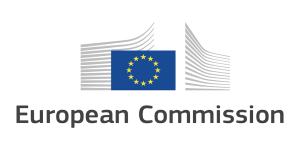European officials are unhappy that some 12,000 chemicals known to cause cancer, infertility, reduce vaccine effectiveness and generate other health impacts

The European Commission announced that thousands of the most notorious chemicals will be rapidly banned in Europe as part of the Zero-pollution goal in the EU Green Deal.
European officials are unhappy that some 12,000 chemicals known to cause cancer, infertility, reduce vaccine effectiveness and generate other health impacts are still widely found in products, including sensitive categories like baby nappies and pacifiers. Officials consider the roadmap a rapid first step in an EU chemical strategy, with more fundamental changes coming later, notably starting in late 2022.
The Commission published a Restrictions Roadmap, an important step forward to provide detailed information on all ongoing work on future restrictions under the EU chemical legislation.
The Restriction Roadmap has three main objectives:
1. Ensure that the commitments under the strategy can be fulfilled in a transparent and timely manner. The Rolling List included in the Annex (see below) sets out the restrictions that have been planned and prepared, and those that have progressed, in particular for the most harmful substances (i.e. those that meet the criteria for CMRs, PBTs, vPvBs, endocrine disruptors (ED), immunotoxicants, neurotoxicants, respiratory sensitisers and STOT substances (Specific target organ toxicity). It will be the cornerstone for the multiannual planning under Article 68 of REACH on introducing new and amending current restrictions and Article 69 of REACH on preparing proposals for the period up to 2025-2027, until the new rules on the generic approach are put in place.
2. Provide an overview, through its Rolling List, of we are using the available authority resources. The Rolling List contains (groups of) substances which are being considered for a risk management measure or for which an entry in the Registry of Intentions (RoI) has been submitted.
3. Provide transparency to stakeholders on the restriction work by authorities and allows companies to anticipate (potential) upcoming restrictions, e.g. by already beginning substitution activities. Those restrictions aim to maximise the reduction of unacceptable chemical risks with all available resources,by means of broader restrictions, through both grouping of substances, and addressing a wider range of uses (industrial, professional, consumer uses and uses in articles). This should lead to better cooperation and shared work to ensure that authority resources are helping to fulfil the overall aim of the Roadmap in anoptimal way.
Commissioner for the Internal Market, Thierry Breton, said: “To fulfil the commitments under the Chemicals Strategy, stakeholders need transparency and visibility on the upcoming work. The Restrictions Roadmap provides such visibility, and allows companies and other stakeholders to be better prepared for potential upcoming restrictions”.
Commissioner for Environment, Virginijus Sinkevičius, said: “These REACH restrictions aim to reduce exposure of people and the environment to some of the most harmful chemicals, addressing a wide range of their uses - industrial, professional, and in consumer products”.
Subscribe to our newsletter & stay updated.